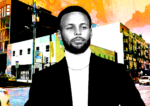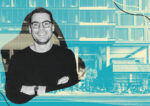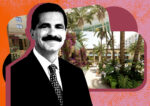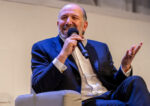Trending
The Closing: Young S. Woo

Young S. Woo is the founder and principal partner of real estate development firm Youngwoo & Associates. He started the company in 1979 after earning a degree in architecture from the Pratt Institute. His firm recently completed the sellout of the Sky Garage condominium at 200 Eleventh Avenue, a building that includes an elevator for cars. In August 2009, the firm made headlines when it bought AIG’s two office towers, 70 Pine Street and 72 Wall Street, for $150 million, with South Korea’s Kumho Investment Bank. The firm also owns farmland in Paraguay and a winery in Argentina, and has been chosen to develop Pier 57 along the Hudson River.
What is your full name?
Young Woo. Middle initial is S for Sik — it means green and growing.
When were you born?
April 23, 1953.
Where do you live?
In Chelsea. I can walk to work, less than 15 minutes. It’s a townhouse — I’ve been there since ’81.
Sounds like you made a smart real estate decision.
Yes, but without knowing it. [laughs]
Where were you born?
Seoul. My family came from North Korea in the war. And my father had a very good impression about America. He thought it was a dream country to go to, but it was so difficult. So he said, “Let’s go to South America, and someday we’re going to reach to the U.S.” So that’s what happened; we went to South America [first to Paraguay and then to Argentina].
You came to New York when you were very young?
I came here when I was 19. The intention was to go to school. Eventually, I went to Pratt.
What did you do before Pratt?
I was driving taxis. I did a lot of things: I was working in a kosher butcher shop, I was driving trucks. But most of the time I was driving taxis, while I was going to NYU Language School to learn English.
Were you scared when you first arrived here?
Nothing scared me. Even now, nothing scares me. The funny story is this: I [decided] to come to the U.S. to follow my father’s dream. So I went to the U.S. Consulate and they interviewed me and they said, “You’re not going to come back.” So I failed the interview and I could not get a visa. So I decided to cross the Mexican border … [but] my brother-in-law’s friend said, “Don’t do that. Come to my office tomorrow.” And he actually took me the very next day to the American Consulate. And I got a visa.
Sounds like you owe him one.
I owe him a lot — too bad I forgot his name! As he was driving me back, he said, “I know a person named John Boggart who owns [a] supermarket in Boca Raton. Why don’t you go to see him, and maybe he can help you.” When I arrived in Miami, all the taxi drivers were speaking Spanish. So, proudly I got into the taxi and I spoke in Spanish and I said, “I want to go to Boca Raton. I don’t have the address but I know the name of the person; he owns a supermarket.” The driver said, “Come on!” [laughs]
Did you find him?
I kept going to different gas stations and asking. [The driver] was translating for me. When we found the place, [Boggart] said, “Don’t stay here, you’ve got to go to New York, because you’d be the only illegal alien Asian immigrant in Boca Raton.”
You went to architecture school, but became a developer instead. How did that happen?
When I applied to school, I thought it was more engineering, because Asian families usually say you have to become a doctor or engineer or scientist. So I was disappointed when I saw so much art going on. But I became more interested, because they make you think differently; they make you create something.
How did you get your start in real estate?
The first building I bought was at 45 West 33rd Street, in 1979. I went to two friends and I convinced them to invest money. I paid $800,000. Apparently, two months before, [the previous owner] only paid $400,000. So I overpaid. [laughs] The only thing I had at the time was confidence. I thought I could create something very different, which I did. In less than eight months, we sold for $1.8 million. So that was how we began the journey, from there.
What do you think is your greatest achievement?
Actually, how to write e-mail was a great thing. I have this very creative side, but I’m so bad on the tech side.
How did you meet your wife?
I was a delivery boy. [laughs] I was working for a Korean grocery [in New York]. I had to deliver rice — rice is heavy to carry. That’s how I met her. That was in 1972. We have two children — one is 27, and the other one is 23.
How did you come up with the car elevator idea at Sky Garage?
[Architect] Annabelle Selldorf came up with this unbelievable design. Even so, we said, it’s not enough — we’ve got to do something so different. That idea was Sky Garage. The concept is nothing new. A lot of parking lots in New York City, they actually have car elevators going up and down. Everybody said, “Don’t do it, it’s impossible to do it.” But we believed in our procedures.
What is your next big project?
We’re opening DeKalb Market in a few months, at DeKalb and Flatbush [in Brooklyn]. … We’re going to build this open market with food, creative merchandise, and farming. Retailers will make their own jewelry so people can see. … We’re going to have hydroponic vertical farms in containers.
What kind of car do you have?
I have two cars, but my favorite car is a Kia Sorento. It’s my brother’s car. … We like to drive in the countryside, so we go to Dutchess County and Putnam County. I have a place up there, in Garrison.
What’s that bracelet?
It’s honoring my mother; she’s Buddhist. She wears one, and so do my two kids. She lives with me, but this way I have my mother with me all day.
Does she have her own apartment in your house?
My wife and I live on one floor, my mother has one floor, and my brother lives on another floor.
How is that — do you guys ever have fights?
Fighting is good. Otherwise it’s boring.




